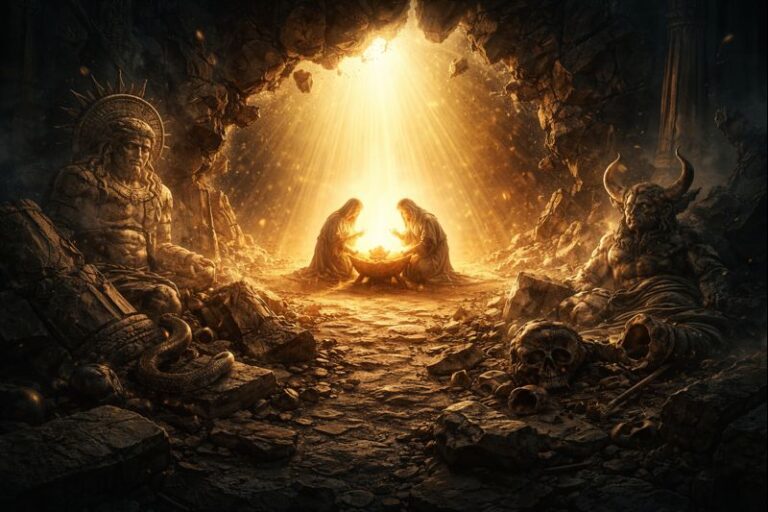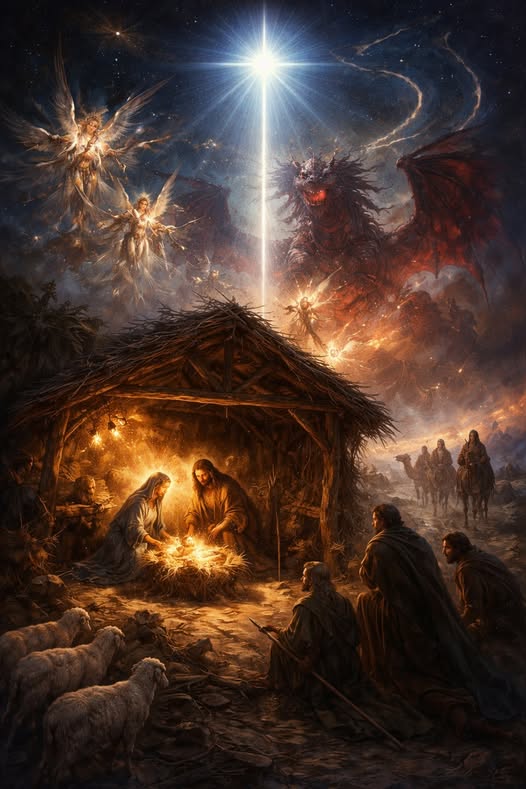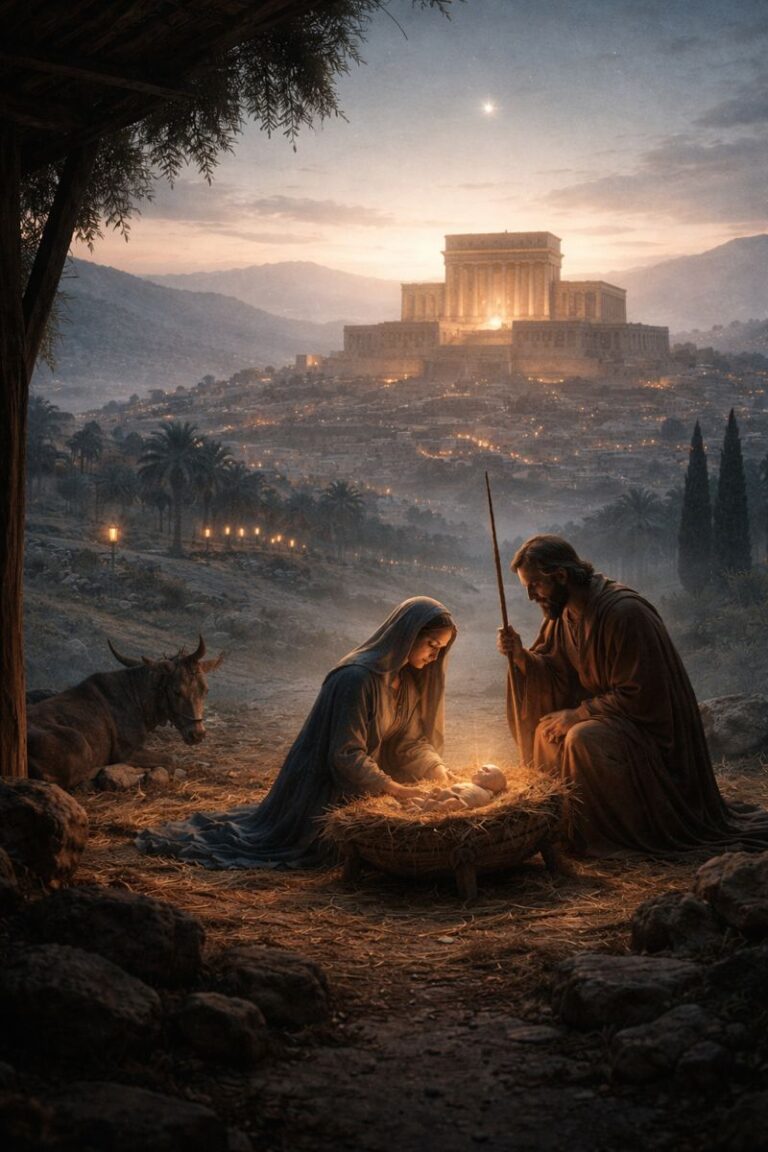
The Tower of Babel is often presented as a cautionary tale about human pride. But beneath the surface lies a deeper spiritual drama, one rooted in ancient rebellion, divine judgment, and cosmic geography. The Babel event was not just about reaching heaven, but about attempting to restore a forbidden connection with divine powers that had been cut off. It may even have been an effort to help the imprisoned Watchers ascend back into heaven, reversing the judgment God had placed on them after their rebellion in the days of Noah.
What follows is a look at Babel not as a failed skyscraper, but as a failed coup, an architectural and ritual attempt to undo God’s judgment and reestablish a divine rebellion. In response, God divided the nations, placed them under members of His divine council, disinherited humanity, and supernaturally created a new nation—Israel—as His own possession and instrument of redemption.
The Memory of the Watchers
In Genesis 6, the sons of God descended to earth and took human wives. These beings, known in 1 Enoch as the Watchers, produced Nephilim, giants who spread violence and corruption. The flood destroyed their bodies, and God imprisoned the Watchers themselves in the Abyss, bound in chains until the day of judgment.
But their legacy continued. First Enoch explains that the spirits of the Nephilim became demons, unclean spirits cursed to wander the earth. Jubilees says these demons began corrupting Noah’s descendants after the flood. God bound most of them but allowed ten percent to remain under the authority of Mastema, a satanic figure.
By the time of the Tower of Babel, the Watchers were in chains, but their disembodied offspring—demons—remained active. And so did the human memory of divine power, forbidden knowledge, and ancient ambition.
Babel: Not Just Pride, but Restoration of Rebellion
Genesis 11:4 records the builders saying,
“Come, let us build ourselves a city and a tower with its top in the heavens, and let us make a name for ourselves…”
This is more than architectural arrogance. In the ancient Near East, ziggurats were sacred structures, stairways intended to connect heaven and earth. And if Babel corresponds to Eridu, then this tower was not just any ziggurat. It was the first, built at the original cultic center of Mesopotamia, where organized civilization, kingship, and temple authority first emerged in defiance of God’s rule. Eridu was the site of the Apsu, a ceremonial portal to the Abyss.
The builders may not have been trying to ascend to heaven themselves, but to create a pathway by which the Watchers could ascend back into heaven, to reverse their exile.
In this scenario, the ziggurat acts as a ritual and architectural tool, aimed not at reaching God but at restoring the heavenly access of the rebellious sons of God. The builders, possibly under demonic influence, seek to undo the sentence of the Abyss, to break the boundary that God Himself had set. It is a human-demonic alliance, working not merely to glorify man but to reestablish the pre-Flood divine order that had been judged.
There is a more chilling possibility beneath the surface. The tower may have been a strategic effort to allow the Watchers not just to return, but to rise higher than before. Rather than bringing the Watchers back to earth, the builders may have been trying to construct a means for them to ascend from the Abyss and enter Heaven once again, perhaps to challenge God Himself.
In this framework, the tower becomes a war platform, and Babel becomes the staging ground for a second divine rebellion. This time, the Watchers would not descend to corrupt humanity. They would ascend to confront the throne of God.
This type of rebellion is echoed in several key passages:
- Isaiah 14:13–14, traditionally interpreted as describing either the king of Babylon or the spiritual power behind him, declares:
“I will ascend to heaven; above the stars of God I will set my throne on high… I will make myself like the Most High.”
- Ezekiel 28:2, speaking to the ruler of Tyre but clearly alluding to a spiritual being behind the king, says:
“You have said, ‘I am a god, I sit in the seat of the gods, in the heart of the seas,’ yet you are but a man, and no god.”
- Revelation 12:7–9 shows an attack on Heaven by Satan at the birth of Christ.
Each of these passages presents a recurring theme: spiritual rebellion that seeks to ascend, overthrow, and replace God. The Tower of Babel fits squarely into that pattern. The builders and demons may have believed that through unified human effort and spiritual alignment, they could reverse the divine sentence and initiate a cosmic counterattack.
But that belief was a deception. According to 1 Enoch 10, 2 Peter 2:4, and Jude 6, the Watchers had been permanently banished and bound until the final judgment. No tower, no ritual, and no alliance could undo what God had decreed.
God’s intervention at Babel was not simply a response to human arrogance. It was a preemptive strike against a spiritual uprising. He dismantled the attempt before it could reach full expression, scattering the people and shutting down the first collective revolt of the post-Flood world.
God’s Response: Divorce and Reassignment
God came down, examined the effort, and decisively intervened. He confused their languages, scattered the people, and, as Deuteronomy 32:8–9 later reveals, disinherited them.
“When the Most High gave to the nations their inheritance, when He divided mankind, He fixed the borders of the peoples according to the number of the sons of God. But the Lord’s portion is His people, Jacob His allotted inheritance.”
At Babel, God not only stopped a human project. He divorced humanity. Each of the newly scattered nations was handed over to members of the divine council, sons of God who were to govern them in the interim. Only one nation would remain Yahweh’s personal possession, but that nation did not yet exist.
This was a moment of transition. God turned from governing all of humanity directly to choosing one man, from whom He would supernaturally create a new nation.
The Supernatural Birth of Israel
Immediately after Babel, Genesis 12 begins with God calling Abram out of Ur. Abram’s wife was barren. His family was old. They had no legacy or land. But God promised, “I will make of you a great nation… and in you all the families of the earth shall be blessed.”
Israel was not born by natural progression. It was a supernatural act of creation. It was the only nation not handed over to other gods. It was God’s personal inheritance, formed to be the vehicle through which He would one day reclaim the nations He had disowned.
The divine divorce at Babel set the stage for the divine redemption that would begin with Abraham.
The Rebellion of the Gods
Psalm 82 reveals that other sons of God were placed over the nations to be their gods.
“God has taken His place in the divine council; in the midst of the gods He holds judgment… I said, ‘You are gods, sons of the Most High, all of you; nevertheless, like men you shall die…’”
These appointed spiritual rulers did not remain faithful. They accepted worship, ruled unjustly, and aligned themselves with the corruption that had marked the pre-Flood world. By the time of Deuteronomy 32:17, the nations are sacrificing to demons, not to God.
Fulfilled in Christ
When Christ appears, He begins the reversal of Babel.
He confronts demons and casts them out. He announces that the kingdom of God has come. He disarms the principalities and powers. At Pentecost, He reverses the confusion of Babel by allowing people from every nation to hear the gospel in their own language, signaling that the nations are being reclaimed.
In Christ, the nations are being gathered. The watchers remain imprisoned. The demons are being expelled and the nations once given over to false gods are invited back into covenant through the blood of Israel’s Messiah.
Conclusion
The Tower of Babel was not merely a monument to pride. It may have been a spiritual power play, an attempt to open a pathway for the Watchers to return to heaven, not to seek restoration but to make war. It was a convergence of human rebellion and demonic ambition.
God responded not just with scattering but with strategy. He disinherited the nations, created a new one for Himself, and began a long plan of redemption that would culminate in Christ.
From Hermon to Babel to Calvary, the Bible tells the story of spiritual rebellion, divine justice, and cosmic redemption. The powers that once ruled the nations will fall. The King of kings has already begun His return.
Want to Know More?
- Gilbert, Derek. The Second Coming of Saturn: The Great Conjunction, America’s Temple, and the Return of the Watchers. Defender Publishing, 2021.
Gilbert explores how the rebellion of the Watchers continues to shape human history and how ancient civilizations, including Babel, aligned themselves with fallen spiritual powers. While he does not claim the tower was meant to allow the Watchers to ascend into heaven, he strongly connects Babel to the wider pattern of defiance influenced by these beings. - Heiser, Michael S. Reversing Hermon: Enoch, the Watchers, and the Forgotten Mission of Jesus Christ. Defender Publishing, 2017.
Heiser explains how the rebellion of the Watchers at Mount Hermon shaped Second Temple theology and how Jesus’ mission was aimed at reversing their influence. Essential for understanding how Genesis 6 and Babel fit into the greater story of redemption. - Heiser, Michael S. The Unseen Realm: Recovering the Supernatural Worldview of the Bible. Lexham Press, 2015.
This foundational work presents the divine council worldview and explains how the disinheritance at Babel fits into the biblical cosmic conflict. It traces the throughline from Genesis to the gospel. - Heiser, Michael S. Demons: What the Bible Really Says About the Powers of Darkness. Lexham Press, 2020.
This book focuses on demons as the disembodied spirits of the Nephilim. It supports the idea that demonic forces remained active after the Flood and continued to influence events like Babel from behind the scenes.





